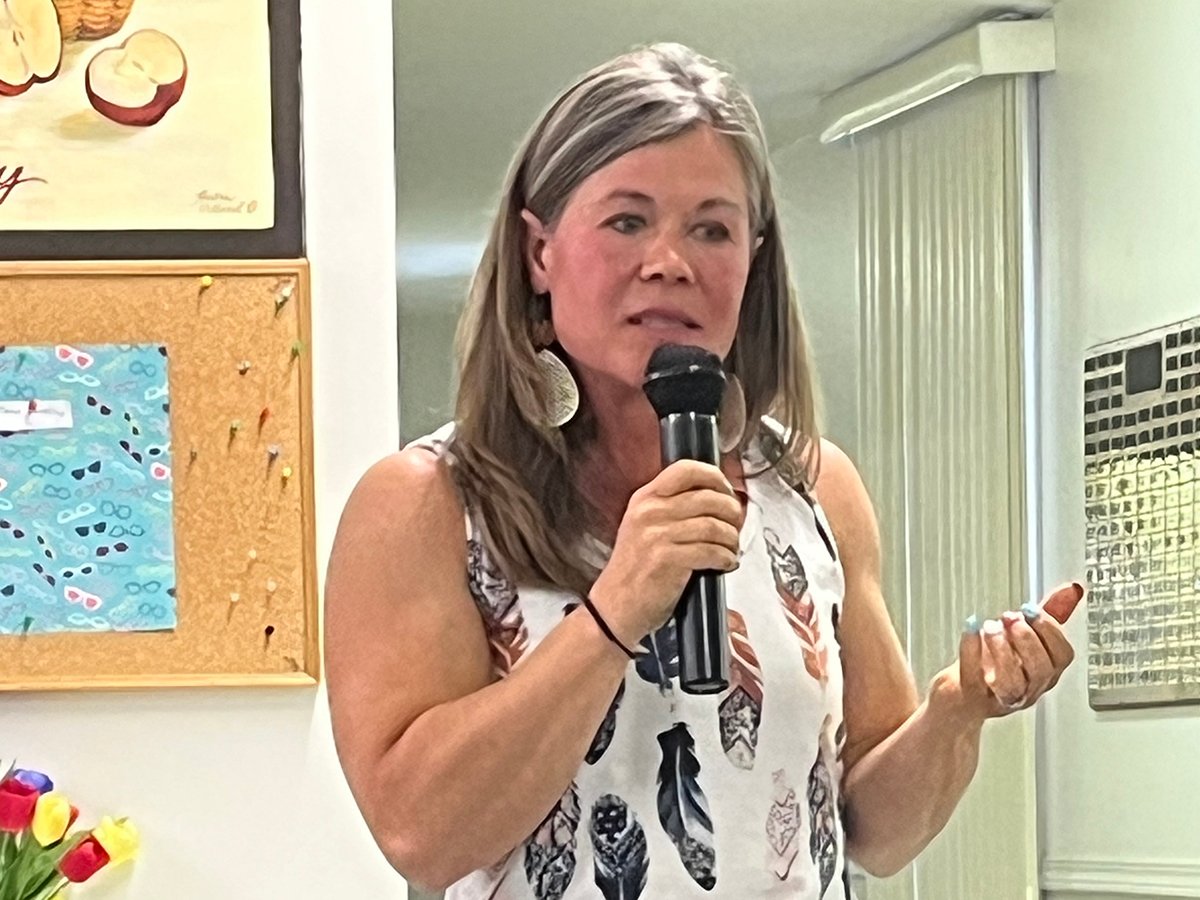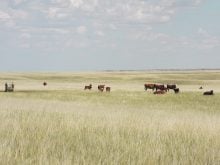Requirements include a front-end loader, old straw bales, manure or wood chips, a thermometer and a calendar
FORT MACLEOD, Alta. — Producers are often surprised to find no evidence at all of dead livestock once the remains are successfully composted. Bones and even teeth are obliterated through a combination of bacterial and fungal action encouraged by heat and moisture.
It’s a reasonably efficient way to deal with dead animals as opposed to burying or leaving them for scavengers, two common ways producers deal with the matter.
Successful deadstock composting requires few inputs, most of which are readily available to producers, said Tim Reuter of Alberta Agriculture’s livestock research branch.
Read Also

Petition launched over grazing lease controversy
Battle continues between the need for generation of tax revenue from irrigation and the preservation of native grasslands in southern Alberta rural municipality.
A front-end loader, old straw bales, manure or wood chips, a thermometer and a calendar are all that is needed.
“You could build more or less every compost pile just using those tools,” he said during a mortality composting workshop organized by the department, four southern Alberta municipalities and the Waterton Biosphere Reserve.
Reuter advised producers to start with a base of straw or chips rather than putting the carcass on bare ground. Large dead animals are about 80 percent water so a base helps absorb moisture.
If more than one bovine is involved, they should be arranged on the base without touching each other. Smaller animals such as chickens or pigs can be stacked if the manure-straw-chip media is put between them.
Once placed, all parts of the carcasses should be covered in a half-moon shape with a few metres of material, be it straw, sawdust, wood chips, spoiled silage, old bedding material, grass clippings or leaves.
The covering material should be fluffy because oxygen is vital to the composting process. The needed microbes are supplied by the carcasses, the manure and the other materials used.
Material with about 60 percent moisture is ideal, said Reuter. If the mixture retains shape when squeezed in the hand, without oozing water or crumbling, it is about the right moisture level.
A compost pile should heat to more than 40 C within the first few days of construction. Major odours indicate the pile is too wet and should be turned, Reuter advised. It should also be turned if too dry after wetter material is added.
About 210 days in the compost process is sufficient to obliterate almost any carcass. However, older horses may take longer and sheep’s wool does not degrade at all.
Those at the workshop asked about the safety of leachate from a compost pile, as well as its effect on destructive prions, the proteins associated with BSE.
Reuter said researchers have examined the leachate beneath compost piles containing dead livestock, testing to a depth of three metres, and have found nothing dangerous. As for prions, the infectivity level is reduced by 99.9 percent within 230 days. Dangerous pathogens including E. coli and campylobacter are effectively destroyed within 28 days in a well-managed compost pile, he added.
Producers interested in deadstock composting must also be aware of provincial regulations, said Mike Courtney of Alberta Agriculture’s inspection and investigation section.
Alberta’s disposal of dead animals regulation requires that, when composted:
- The volume of dead animals in a pile must not be more than 25 percent of the total.
- Material should not be removed until odour is minimized; compost won’t contaminate surface or groundwater; will not attract disease vectors; and won’t spread disease or cause scavenging or nuisance.
Courtney said there are also setback regulations governing distance from the property boundaries and provincial highways.
“It’s pretty much common sense … but the regulations are there to protect everybody,” he said.
If large numbers of carcasses are involved, such as in the case of a barn fire or major disease outbreak, the department works with the producer and the provincial veterinarian to determine the best disposal method, Courtney added.
Because manure tends to be the most common medium used for carcass composting, some additional regulations apply.
Cody Metheral, agri-environmental specialist with Alberta Agriculture, said manure handling on its own is covered by the Agriculture Operations Practices Act regulations, but deadstock in manure comes under the Natural Resources Conservation Board. The regulations do overlap, he said, but producers must be aware of the differences.
Information about those rules and carcass compost methods are available online by searching for large animal mortality composting at bit.ly/339w7ls.
Burial is an option for dead livestock disposal, but scavenging by grizzly bears and wolves is an issue in parts of Alberta.
Jeff Bectell, a rancher and member of the Waterton Biosphere Reserve, said he has seen bears dig six feet down to uncover a buried carcass. A deadstock removal program has been implemented in parts of the province so ranchers can deposit carcasses in bear-proof bins, with the contents later taken for rendering.
“There’s all kinds of reasons to manage your deadstock, and large carnivores are certainly one of them,” said Bectell.
He noted a project in Montana originally designed to compost road kill that expanded to include livestock.
“They’ve got a lot of expertise at it. It’s definitely worked well for them as a cost effective way to manage this.”
Bectell said on-farm compost piles in areas frequented by bears and wolves should be surrounded by electric fence. Though the heat of the compost process may be a deterrent, there are exceptions among hungry predators.















